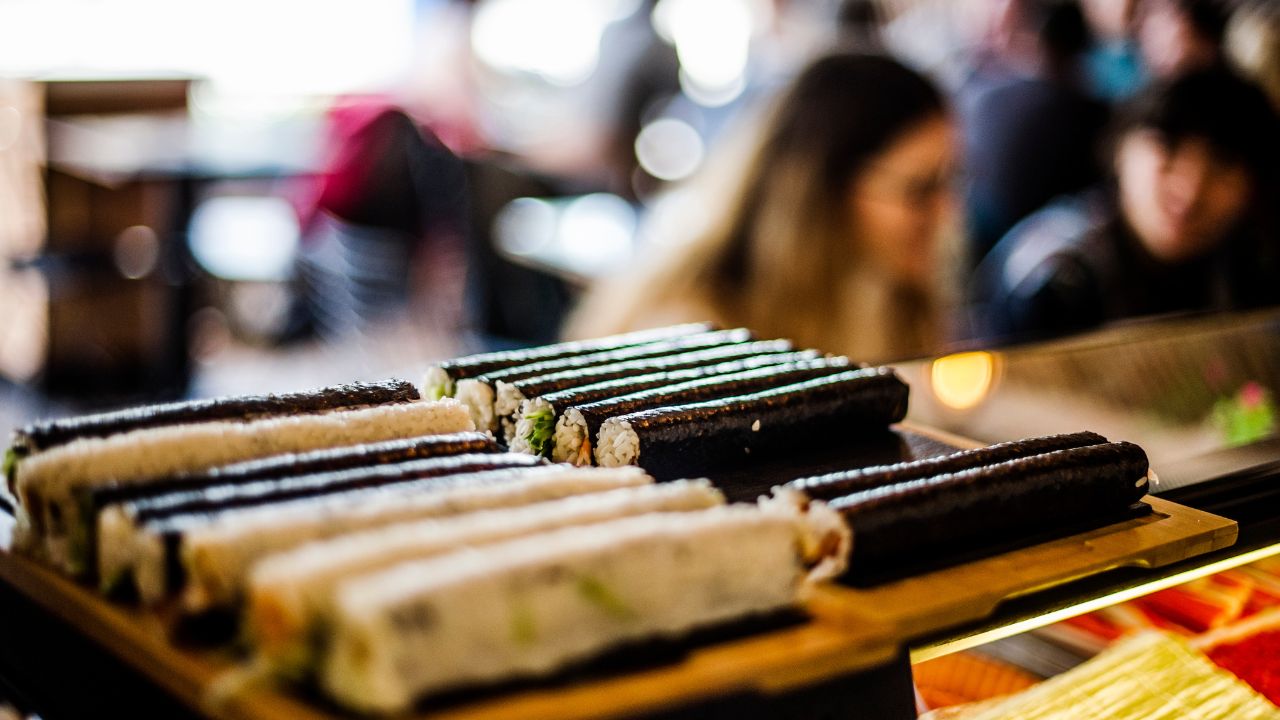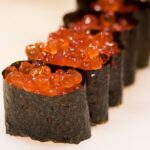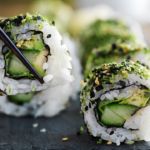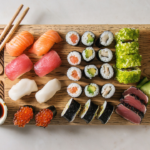
Sushi restaurant Offers wasabi, soy sauce, ginger. Always next to your sushi bites. Where did they come from, why do they, how do you actually use them?
Eating sushi This is a kind of ritual and we even subconsciously try to follow it. We put a bit of wasabi on top, dip the bottom gently in soy sauce and in between each piece we bite into pickled ginger. Do not dip the sushi pieces in a slurry of mixed wasabi sauce with a piece of pickled ginger on top. No, because it is!
Wasabi, Japanese horseradish
Japanese horseradish or wasabi, or Eutrema japonicum or Wasabia japonica.
Today a condiment for sushi, formerly a medicinal plant mentioned in the 'Honzo Wamyo', the oldest Japanese encyclopaedia on these very plants, compiled in the early 10th century AD.
What ailments does Japanese horseradish help with? Intestinal and respiratory, but it was also a preservative ingredient in other medical concoctions. In other words, it was attributed to germicidal properties, although of course the concept of bacteria was unknown in ancient Japan.
Wasabi began to be used as a sushi condiment in the early 19th century, probably as a natural antibiotic for a dish of raw fish and fermented rice.
Today, when sushi is prepared hygienically, wasabi is a condiment. Do you like it spicy? Add wasabi paste. Don't like it? Don't add it.
Cultivation of wasabi It is very demanding and a kilo costs up to 1,000 zlotys, so in Europe we use wasabi paste made from horseradish and mustard. It has exactly the same properties and looks the same because it's treated with a natural dye. But it's the same spice all the time, so use as needed.
Soy sauce, the Japanese national condiment
Soya was domesticated in China, and the soy sauce began to spread in Japan from the 16th century. It is a unique flavour because it is the fifth (after sweet, salty, bitter and sour). Umami, this taste quality, is due to Asian cuisine.
But soy sauce is not just soya. There is also water, salt and wheat (long ago barley). It is this mixture that undergoes the fermentation process, the end result of which is precisely Shoyu, the soy sauce.
This dark brown sauce is used in Japanese cuisine to season the sushi, fried rice, fries, ramen, miso and many more dishes.
In our country ketchup, in Japan soy sauce,
W sushi restaurants the most important thing is the portion we eat. It already has a taste. Do you like it spicy? We add wasabi on top. We like a deep umami flavour? We dip the bottom of the bite in soy sauce, spicing up the flavour.
Ginger, not just health itself
Young sliced ginger marinated in sweetened vinegar, or gari. An essential accompaniment to sushi. Since the 17th century probably.
It came to Japan from China and Korea at the beginning of the first millennium. And then it became more widespread. Also when consuming sushi, because:
1) Ginger resets your taste buds after fatty fish or strong sushi. By eating ginger you can get rid of the taste of the previous bite.
2) Ginger reduces the smell of raw fish.
3) Ginger sterilises the bacteria in raw fish (again, bactericidal action).
4) Ginger helps with digestion.
That is, we bite through the pickled ginger between each piece of sushi. And we can season the next one with wasabi and soy sauce as we like. To bite through the gari again. Best sushi restaurant will provide an authentic taste experience and exquisite dishes to try. Sushi restaurant is where tradition meets modernity, creating an unforgettable culinary experience.









